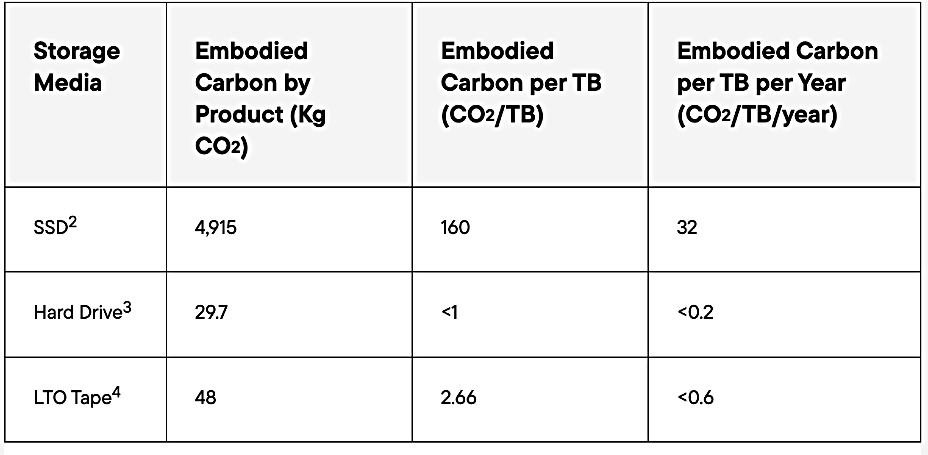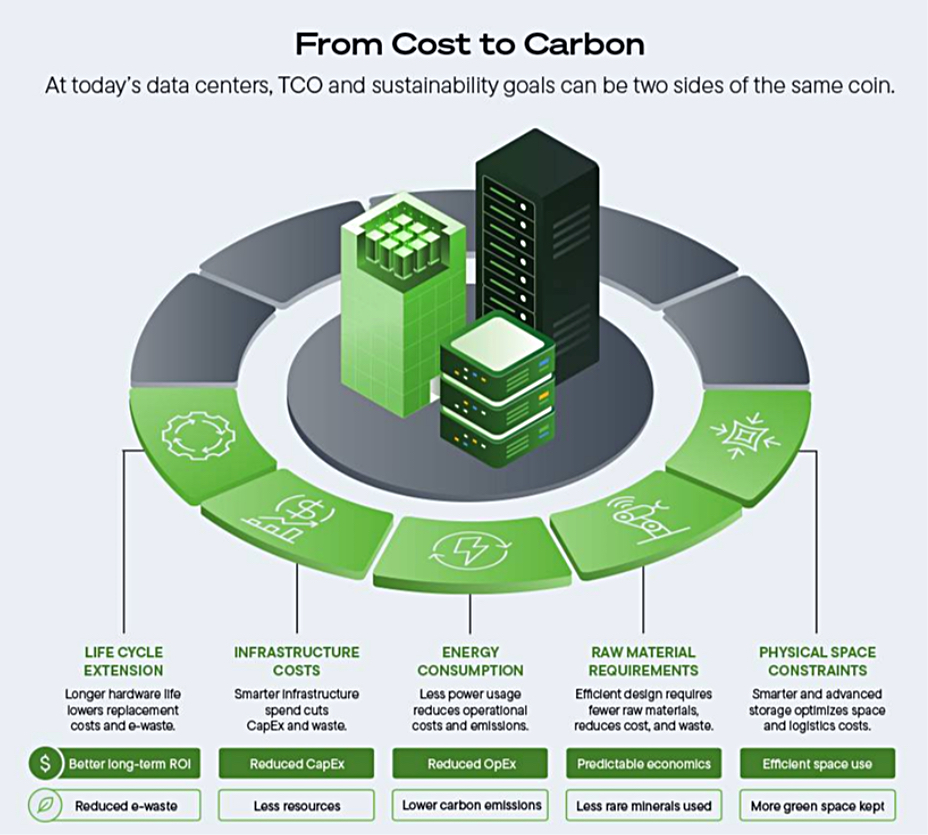A Seagate Decarbonizing Data report says energy usage is a top concern for more than half of business leaders and better use of disks is a wise datacenter choice.
 Jason Feist
Jason FeistThe report cites a forecast by Goldman Sachs that global power demand from datacenters will increase by as much as 165 percent by 2030, compared with 2023. With this in mind, it says that rising data volumes, slowing power efficiency gains, and increasing AI adoption are putting pressure on organizations to manage carbon emissions, infrastructure expansion, and total cost of ownership (TCO) at the same time.
Jason Feist, SVP of cloud marketing at Seagate, says in the report: “Datacenters are under intense scrutiny – not only because they support modern AI workloads, but because they are becoming one of the most energy-intensive sectors of the digital economy. This calls for a fundamental shift in how we think about data infrastructure – not as a trade-off between cost and sustainability, but as an opportunity to optimize for both.”
What does Seagate think a fundamental shift consists of? Getting rid of spinning disks? Not at all. The report includes a table showing the embodied carbon of the three main types of storage media – disk, SSD, and tape:

It concludes:
- SSDs have the highest embodied carbon, both in total and per TB, making it the most carbon-intensive option among the three storage media.
- Hard drives exhibit the least carbon footprint, both in total and on a per-TB basis, offering the most carbon-efficient sustainable storage solution.
- LTO tape shows moderate embodied carbon, but its annual impact is higher than that of hard drives.
The report suggests three strategic pillars for building a more sustainable data future:
- Technological Innovation: Advances in computational power, storage areal density, and energy-efficient technologies like liquid/immersion cooling and HVAC systems can significantly lower energy consumption and carbon emissions, effectively managing the growing demand profile.
- Commitment to life cycle extension and circularity: Refurbishing, reusing, and maintaining storage equipment extends lifespan and reduces waste. Real-time environmental monitoring and transparent reporting can foster accountability across the datacenter environment.
- Share accountability across the ecosystem: Achieving meaningful emissions reduction – across Scopes 1, 2, and 3 as outlined in the report – requires collaboration across the entire value chain, including vendors, suppliers, and cloud service providers.
 Decarbonizing Datareport graphic
Decarbonizing Datareport graphicAn example of tech innovation, Seagate says, is its HAMR-based Mozaic 3+ disk technology, now in volume production. This enables up to three times more capacity in the same footprint than a 10 TB drive, and reduces a drive’s embodied carbon by more than 70 percent per terabyte. It also lowers cost per terabyte by 25 percent, according to IDC.
Feist says: “Sustainability cannot be solved in isolation. A holistic approach spanning infrastructure, life cycle management, and industry-wide accountability could ensure that the growth of AI and datacenter operations does not come at the expense of the environment.”
Download the Decarbonizing Data report here.
Bootnote
Seagate produces and sells its own Nytro SSD products for datacenter use. Flash drive-based vendor Pure Storage has a different point of view, as you might expect. It takes a system-level view rather than per-drive. Pure suggests that, for a 1 exabyte deployment over ten years with a five-year life cycle for the HDDs and a ten-year life cycle for DirectFlash Modules, it finds that the HDD system emits 107,984 metric tons of carbon whereas a Pure-based system emits 14,779 tons. You can find more details here.
.png)




